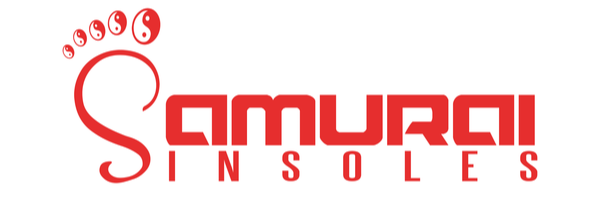When it comes to foot and ankle injuries, the more you know, the better.
This is especially true for athletes and active folks who are more likely to experience these kinds of injuries.
In this article, we're sharing everything you need to know about Achilles tendinopathy.
We're also filling you in on the different treatment options that are currently available.
What is Achilles Tendinopathy?
The Achilles tendon is located on the back of the ankle.
Achilles tendinopathy occurs when the Achilles tendon undergoes a series of small, repeated injuries (microtraumas) that don't heal properly.
This condition causes stiffness, swelling, and pain in the tendon. It used to be known as Achilles tendonitis, which refers to inflammation of the tendon.
However, experts have started using the term tendinopathy instead of tendonitis. This is because inflammation isn't the main cause of pain in this condition.
Common Causes
Achilles tendinopathy can be caused by a number of situations, including the following:
- Overuse
- Wearing inappropriate footwear while training or exercising
- Poor form while training or exercising
- Dramatic changes in training programs
- Working out on sloped or hard surfaces
Active and inactive individuals alike can develop this condition. But, the risk is increased for athletes. This is especially true for runners, dancers, tennis players, and basketball players.
People with certain forms of arthritis, including ankylosing spondylitis and psoriatic arthritis, are also at risk, as are those who have high blood pressure, diabetes, or high cholesterol.
Some researchers also think that certain people are genetically predisposed to develop the condition.
Achilles Tendinopathy Symptoms
Pain is the most common symptom associated with Achilles tendinopathy. If you're suffering from this condition, you'll probably experience more pain at the following times:
- First thing in the morning
- At the beginning of your training sessions
- After exercising or training
- When you touch the area around the tendon
Some people also notice some swelling around their Achilles tendon.
Diagnosis
To diagnose this condition, doctors will usually feel for swelling and tenderness around the tendon. They may also ask you to perform exercises like one-legged calf raises or hopping on one foot.
Doctors usually don't require x-rays for their diagnosis. But, if they're uncertain, they may order ultrasounds or MRIs.
Treatment Options
There are a number of treatment options that can help with Achilles tendinopathy.
Usually, conservative treatments are all that is required to help people heal. Some common options include:
Rest
Often, taking some time off from sports and high-impact exercise can help you recover.
Doctors typically recommend resting for a few days, or until the pain improves. When you start to feel better, you can slowly start exercising again. But, you should continue to take it easy for a few more days so you don't end up back at square one.
Mild Painkillers
Non-steroidal anti-inflammatory drugs (NSAIDs) are often recommended to help with the swelling and pain that comes with Achilles tendinopathy.
You should avoid overusing these drugs, though, and don't take them consistently for more than two weeks.
Overusing NSAIDs can mask your pain and cause you to think you've recovered when you actually haven't. This means you may end up resuming your normal activities before you're ready, which will delay the healing process.
NSAIDs, when taken in excess, can also cause stomach pain and internal bleeding.
Ice
Ice also helps numb the Achilles tendon, which limits blood flow and reduces pain and swelling.
While you're resting, try sitting with your tendon on an ice pack for between 10 and 30 minutes a few times per day.
Achilles Tendon Exercises
Exercises to stretch and strengthen the Achilles tendon are also beneficial. Not only do they promote recovery, but they also help prevent future injuries.
Some popular exercises include:
The following exercises can be used to help treat Achilles tendinopathy:
- Calf stretches against a wall
- Single-legged calf raises
- Calf raises with heels hanging off a step
- Ankle stretches with a towel or resistance band
These exercises can be performed a few times a day, usually for 10-20 repetitions each. Your doctor or physical therapist will give you a more specific protocol to follow.
Orthotics
You may have heard of wearing orthotics for flat feet. It turns out they're also a helpful option for people struggling with Achilles tendinopathy.
One way to help your Achilles tendon heal is to wear special inserts, also known orthotics, that lift your heel while you walk. This alleviates pressure on the tendon, which reduces pain and gives it a chance to heal without keeping you off your feet entirely.
Orthotics are a great option. But, don't neglect the other treatment options we've listed, like a rest and ice, just because you have an insert that helps relieve your pain.
It's still important to give your Achilles tendon time to fully heal, which can only happen if you're not using it.
Specialized Treatment Options
If none of the above treatments work, your doctor or physical therapist may suggest more specialized treatment option.
These treatment options are rare. But, they are occasionally necessary. They're most commonly used for serious athletes who need to get back in the game as soon as possible.
Some examples include:
Extracorporeal Shock-Wave Therapy
This treatment involves using a special machine to pass sound waves through the skin to the Achilles tendon.
It comes with a very small risk of rupturing the tendon, primarily in older individuals. Despite the small risk, this therapy is generally considered safe. But, its effectiveness is still being determined.
Injections
Some specialists also recommend an autologous blood injection.
This involves having some of your own blood drawn and then injected into the area around the Achilles tendon.
It's believed that this procedure can help promote healing by encouraging cell growth.
When is Surgery Required?
If absolutely nothing else works to get rid of your pain, surgery is an option.
During surgery, any nodules or adhesions that have developed within the Achilles tendon will be removed. The surgeon will also make a lengthwise cut in the tendon to encourage healing.
Most people are pleased with the results of their surgery and find that helps relieve their pain.
Get Your Insoles Today
Before you go for any dramatic treatments like surgery, make sure you really try the conservative methods mentioned above.
If you're looking for high-quality orthotics to help your Achilles tendon heal, make sure you try Samurai Insoles.
Check out our online store today to find the perfect insoles for you.
We're so confident in our product that we offer everyone a 60-day money-back guarantee!
CLICK HERE to kick Achilles Tendonitis symptoms to the curb FOR GOOD!




